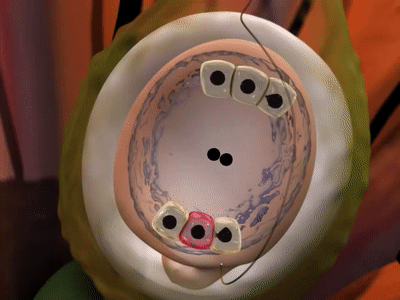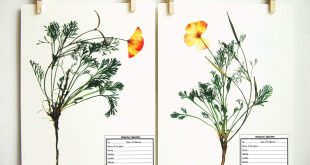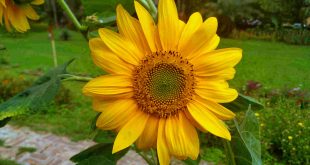Fertilization is the union of male and female gametes to produce a zygote. There are several steps of fertilization. They are described below.
- Germination of Pollen.
- The course of the pollen tube.
- Entry of pollen tube into the ovule.
- Entry of pollen tube into the embryo sac.
- Gametic fusion.
Germination of pollen
Exact information on the time taken by pollen to germinate on the stigma is available for only a few plants, but considering different plants the time may vary significantly.
The first step in germination is the expansion of the pollen grain by the absorption of liquid from the moist surface of the stigma and the protrusion of the intine through a germ pore. The small tubular structure which arises in this way then continues to elongate, making its way down the tissues of the stigma and style. Only the distal part of the tube has living cytoplasm, and as the nuclei pass forward callose plugs are left in the empty portions behind them.
Most pollen grains are monosiphonous, i.e., only a single pollen tube emerges from each pollen grain; others, like those of the Malvaceae, Cucurbitaceae, and Campanulaceae, are polysiphonous. In Amentiferae, the tube shows branches.
Pollen grains may also germinate on other parts of the flower besides the stigma. In cleistogamous flowers, germination takes place within the anther loculi, and in Aeginetia indica even on the moist surface of the corolla tube.
Frequently pollen grains germinate on a foreign stigma, i.e., the stigma of a different species (see Eigsti, 1937; Sanz, 1945). If fertilization takes place, it results in the formation of interspecific and intergeneric hybrids.
The course of pollen tube
After the tube has emerged from the pollen grain, it makes its way between the stigmatic papillae into the tissues of the style. The latter is extremely variable in length. In some plants, it is so short that the stigma is described as sessile, while in Zea mays the so-called “silk” may attain a length of 50 cm.
Depending on the presence or absence of the transmitting tissue and the extent of its development, styles have been classified into three main types called
- Open
In this type, there is a wide stylar canal and the inner epidermis itself assumes the function of the nutrition and conduction of the pollen tube, as in the Papaveraceae, Aristolochiaceae, Ericaceae, and many monocotyledons. - Half-closed
In this type, the canal is surrounded by a rudimentary transmitting tissue of two or three layers of glandular cells, as in several members of the Cactaceae. - Closed
In this type, illustrated by Datura and Gossypium, there is no open channel but instead a solid core of elongated and richly protoplasmic cells through which the pollen tube grows downward in order to reach the ovary.
Entry of pollen tube into the ovule
After arriving at the top of the ovary, the tube enters the ovule in different ways. These ways to enter the ovule each have a different name.
- Porogamy: Through the micropyle
- Chalazogamy: Through the chalaza. E.g. Casuarina and members of Amentiferae.
- Mesogamy: Through funiculus or integument. E.g. Cucurbita, Alchemilla.
- May vary in same species. E.g. Epilobium, Brassica oleracea.
Entry of pollen tube into the embryo sac
After penetrating the wall of the embryo sac, the pollen tube may
- pass between the egg and one synergid as in Fagopyrum.
- between the embryo sac wall and a synergid as in Cardiospermum.
- directly into a synergid as in Oxalis, Elodea, and Daphne.
In Viola, it not only enters a synergid but is said to force its way through the base of the latter.
Prior discharge, the tip of the pollen tube swells up or bifurcates or shows substantial openings.
Gametic fusion
After the pollen tube has discharged its contents into the embryo sac, one male gamete fuses with the egg (syngamy) and the other with the two polar nuclei (triple fusion).
 Plantlet The Blogging Platform of Department of Botany, University of Dhaka
Plantlet The Blogging Platform of Department of Botany, University of Dhaka





